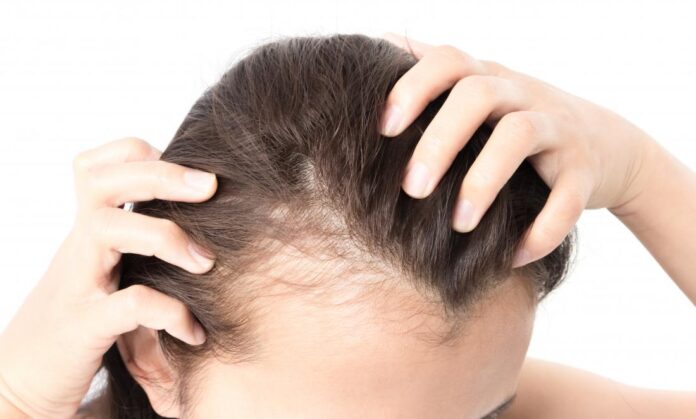Women who have sudden, significant hair loss are said to be suffering from hair loss. Humans typically lose 50 to 100 single hairs per day. A natural balance includes hair shedding. When it comes to hair, some fall out, and some grow. Hair loss occurs when this balance is upset, causing hair to fall out and grow less. Shedding of hair is not the same as hair loss. Alopecia is the scientific term for the common hair loss.
Most of your skin’s surface areas have hair growth, but the lips, eyelids, soles of your feet, and the palms of your hands do not. Vellus hair normally is light, fine, and short. The hair associated with andropause is longer, darker, and thicker. You can learn about the best hair fall treatment to protect your hair health.
Symptoms of hair fall in women:
Gradual thinning on top of the head
As humans age, this type of hair loss becomes prevalent. At the forehead hairline area, hair quickly starts to recede in men. Women’s hair thickness tend to be wider than men’s. Frontal fibrosing alopecia is a receding hairline and is a hair loss trend that is becoming more common in elderly women.
Circular or patchy bald spots
Some people have hair loss that occur in patches or circles on their eyebrows, beard area, or scalp. Before this hair fall start, the scalp skin may start to itch.
Sudden loosening of hair
A physical body shock or a strong mental pain can cause hair to become weak. As you wash or comb your hair, or even after giving your hair a mild tug, you might lose a few handfuls of hair. This sort of temporary hair loss typically results in general hair thinning.
Full-body hair loss
Certain illnesses and medical procedures, such as chemotherapy for cancer, can cause hair loss all over your body. Hair typically grows back.
Visible patches that are spread over the scalp
The presence of patches of scaling can detect ringworm. Broken hair, redness, puffiness, and occasionally oozing may be present in addition to it.
Causes of hair fall in women:
Family history
Age-related hereditary conditions are the most typical cause of hair loss. Androgenic alopecia is also known as male-pattern baldness and female-pattern baldness in simple terms. It typically happens over time and in predictable ways. Men frequently experience bald patches and a receding hairline, while women frequently experience thinning hair at the top of the head.
Hormonal changes and medical conditions
The hormonal changes brought on by pregnancy, childbirth, menopause, and thyroid issues are just a few of the conditions that can result in irreversible or temporary hair loss. Alopecia areata, an immune system-related disease that results in patchy hair loss, ringworm on the scalp, and trichotillomania, a disorder that makes people pull their hair out.
Hairstyles and treatments
Traction alopecia is a form of hair loss brought on by excessive styling or tight-pulling hairstyles like pigtails or cornrows. Permanent hair dyes and hot oil procedures can also cause hair thinning. Hair loss may become irreversible if scarring takes place. You can try hair fall treatment in homeopathy if your hair responds to other treatments in an undesirable way.
Final thoughts
While hair loss can’t be predicted or prevented, you can always take hair treatment for women. When wet, use a detangler when brushing and combing your hair and minimizing tugging. A hairbrush with large teeth could help in avoiding hair loss. Harsh treatments like hot rollers, curling irons, hot-oil treatments, and permanents should be avoided.









